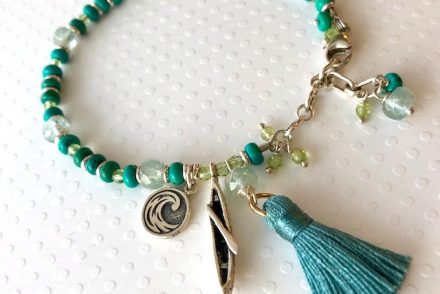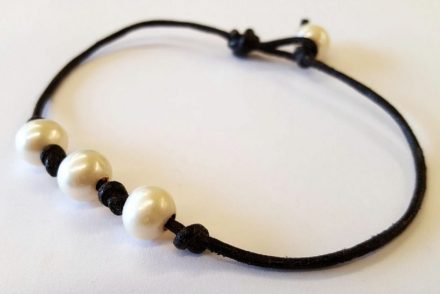The original Boho!

A staple of the bead world, Czech glass beads come in so many varieties that we couldn’t easily pick one out to feature today. But we’d love to take you on a tour through the history of these great beads.
- Roman times: Beads are already being made in what’s now Bohemia (the Czech Republic).
- 900’s AD: Bohemian graves include local beads.
- 1200’s: Bohemian glass factories make many items, including beads for rosaries.
- 1550’s: A glass industry is founded in the cities of Jablonec, Stanovsko, and Bedrichov. Glass beads are made by cottage crafters for use in major jewelry factories.
- mid-1800’s: Czech “sample men” travel the world, taking notes and sketches of what kinds of beads people want. Back home, the factories make these new designs, which sell well and in turn increase the demand for beads.
- later 1800’s: Technological advances, like multi-bead molds and machines to handle some of this work, make Bohemia a center for pressed-glass beads.
- 1920’s: The Czechs are the leading bead exporters in the world.
The Czech bead industry has had its ups and downs since, due to economic conditions, wars, and politics, but Czech glass beads remain one of the most important elements in the jewelry-maker’s tool kit.

What’s special about the way the classic Czech beads are made? It’s all about the contrast with older bead-making techniques. Previously, beads had been made by winding hot glass around a form, or blowing it (either into a mold or freehand). The Bohemian innovation, around 1860, was to place hot glass into a mold,which was sometimes built into a pair of tongs. The molded glass was then pierced by a rod, slowly cooled, then had the mold “seams” ground off to leave a smooth bead.
Unlike the older techniques, molding or “pressing” was easy to automate, which meant production could increase to meet significant demand and maintain high quality. A less obvious benefit of the pressing technique is that holes for stringing can be put in the beads at any angle imaginable. Even multiple holes are possible. The reason why this only became possible with molded beads is that these are pierced only after being formed — previously, beads were formed around a rod, in effect predetermining where the hole would be located.

Today, Czech glass beads are available in a multitude of forms from the basic to the fanciful. Firepolish beads, one of the earliest imitations of crystal, are beloved for their heat-smoothed faceting. “Fancy” Czech beads range from flower spacers to glass bead caps to faux turquoise, and from leaf-shaped drops to skulls to ladybugs.
Sources:
- “History of Czech Glass” by Beverly Fernandes
- “Making Czech Glass Beads” by Beverly Fernandes
Suggested further reading:
- Beads of the World by Peter Francis Jr.
- Glass 5,000 Years edited by Hugh Tait
- The Czech Bead Story by Peter Francis Jr.
- The History of Beads from 30,000 B.C. to the Present by Lois Sherr Dubin
- Beads from Gablonz / Perlen aus Gablonz by Waltraud Neuwirth
Want to suggest a featured bead? Leave a comment!




4 Comments
Great information, wonderful history!! Thanks!
Yes they are a staple – I use tons of them. I only recently started using the swarovski crystals as an accent, but still use the Czech crystals/glass for the bulk of my crystal bearing designs.
Yep, Czech glass is the way to go for a lot of reasons. I don’t want to have to price all my lanyards at the high end, so using faceted Czech glass means I can put some out at a budget conscious price. The lanyards use a lot of beads (28 to 31 inches long) and to do them in Swarovski would make them more expensive than most people want to pay.
OH wow! What a great article! I never knew specifically what made Czech Glass special – just know that I love me some firepolish beads! Thanks for the great lunchtime reading material!
I love czech glass! The colours, the shapes, the finishes, the quality. There’s always that right shape or colour for a piece of jewelry. And of course I also like buying beads from a country (and beadshop) closer to home than, say, China or India, to reduce the transports. Czech crystal from Preciosa is also a product I love to buy.